How to Feel Inspired by Ornamental Gardens
For me, guilty pleasure isn’t buying a bag of Doritos or reading People magazine (especially since I have no idea who most celebrities are these days). Instead, I feel sheepish when I grow plants without being able to explain what they’re good for.
“Useless” plants is how I got in to gardening in the first place. Around the age of 14, I picked up one of my mom’s garden catalogs and found a whole world of weird and freaky plants far outside the realm of my grandmother’s azaleas, nandinas, petunias, and hostas. Well, Plant Delights Nursery does sell hostas, but I forgave them since they’re named things like ‘Elvis Lives’, ‘Tattoo’, and ‘Outhouse Delight’.

Photo Caption: I was in high school the first time my mom drove me up to visit Plant Delights Nursery. I used to go every year but fell out of the habit as I migrated to edible landscapes. This year Nathaniel took me for a birthday trip. (I turned 36 on April 26th in case you wanted to know).
It turns out hostas are edible plants, but I didn’t know that at the time. What I knew was that I wanted weird things for my weird garden. If it screamed “Little Shop of Horrors” I could count on Plant Delights to have it in stock with an engagingly dorky description.
I never could figure out why the other kids didn’t think I was cool.
Click the link to keep reading.
The week after Nathaniel and I visited Plant Delight’s May 11th open house (for a birthday treat), I went to permaculture class in Asheville. I’ll write about the bulk of the class in a later post but one of the weekend lectures was by Chuck Marsh from Useful Plants Nursery and Living Systems Design. To my very great surprise, he mentioned Tony Avent (of Plant Delights) in his talk as a great plantsman, and quoted Tony as saying, “You don’t know a plant until you’ve killed it 3 times.”
At that moment my gardening career came full circle. I remembered why I’ve been reassuring people who kill plants with, “good, that’s educational!” for the past decade — it’s because when I was a pink-haired kid standing in the Plant Delights display gardens, Tony Avent told me that you don’t know a plant until you’ve killed it 3 times.
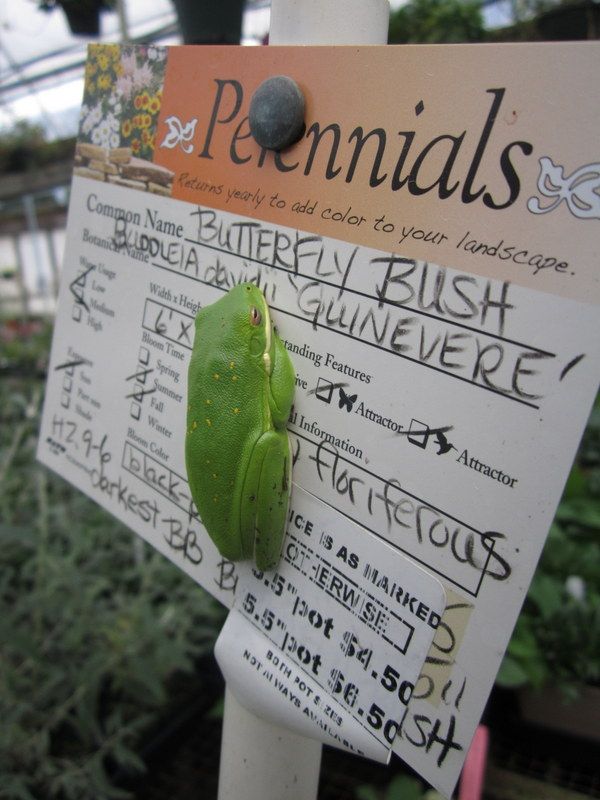
Photo Caption: We also dropped in at Big Bloomers Nursery in a nearby town and saw this green tree frog. Tony Avent says, “friends don’t let friends buy annuals” but we couldn’t pass up the affordable 4-packs of beneficial insect attracting bedding plants. We planted them near perennial shrubs that are small right now but will take up more room in subsequent seasons. Plus, we finally found some compact blueberry shrubs for the front garden.
The thing is, I learned a lot more than a love of horticultural experimentation from Plant Delights Nursery. Their display gardens made a huge impact on me with the narrow winding paths, heavy mulch, amazingly loamy soil, and intensively planted species. It also fostered a sense of horticultural creativity and exploration that is incredibly useful in any type of garden design.
Tony Avent’s catalog plant descriptions taught me that trial and error is the best way to find out if a plant will grow in your area. Ignoring USDA zone recommendations made it possible to discover that rhubarb survives in my yard with afternoon shade, some citrus will make it through our winters, and that gooseberries can tolerate southern heat. I only wish I hadn’t believed that olives couldn’t be grown in humid conditions so that my trees were well-established instead of newly planted.
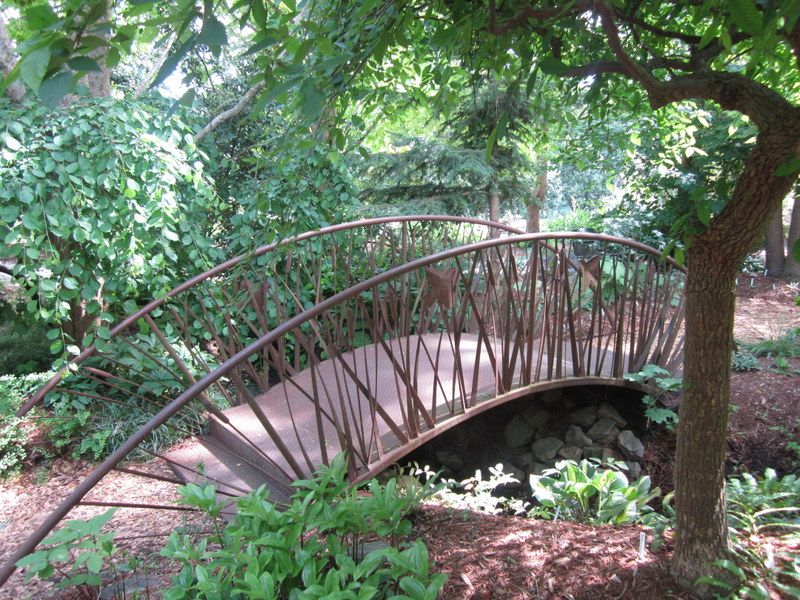
Photo Caption: The hardscaping elements of Juniper Level Botanic Garden (The Plant Delights display gardens) are ornate, and mostly subtle (he does have some redneck sculptures that are more ostentatious). There’s no need for showy ornamentation when the plants are already so weird.
I suppose that now I need to think of a new guilty pleasure. Maybe out-of-season organic produce from California or New Zealand? In the meantime, let’s talk weird plants…
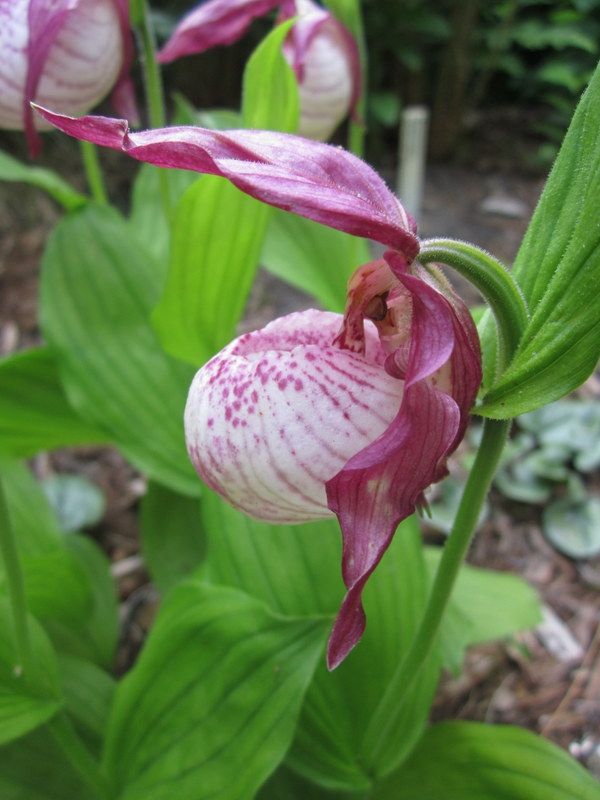
Photo Caption: Ladyslipper orchids suffer poaching in many areas, but the ones at Plant Delights Nursery are tissue propagated.
I always laugh at people who use “vanilla” as a synonym for “boring.” Duh, it’s an orchid! If you’ve ever seen our native orchids in the wild and wished you could take them home, Plant Delights is a good source for ethical, nursery-raised stock.
Learning that ladyslipper orchids require a symbiotic relationship with fungi and microorganisms is the first time I can remember being aware of this aspect of the soil food web. At the time I thought it was unique — I had no idea that approximately 90% of plant species will form relationships with fungi or bacteria.
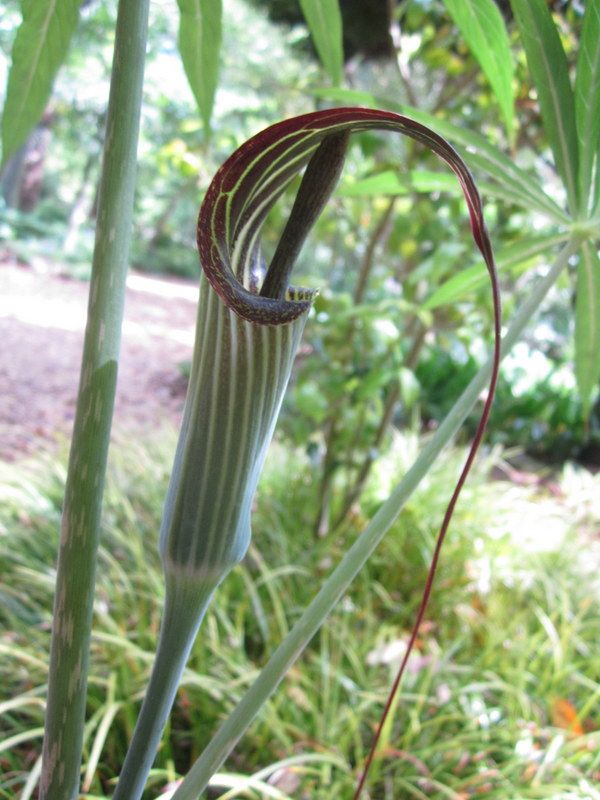
Photo Caption: We have native species of Jack-in-the-pulpit but Plant Delights carries specimens from many locales. I used to be obsessed with collecting them all.
There are few things that will stop a hiker in their tracks faster than a Jack-in-the-pulpit (what an imaginative common name). The Carolinas can boast Arisaema triphyllum, which also gets called the less creative common name of “bog onion.”
Voodoo lilies are sometimes mistaken for Jack-in-the-pulpits but are a different genus. They also have the unpleasant habit of smelling like roadkill on a summer day — an aspect of being pollinated by flies. Their often giant, wrinkly, and stinky maroon flowers are definitely a conversation piece.
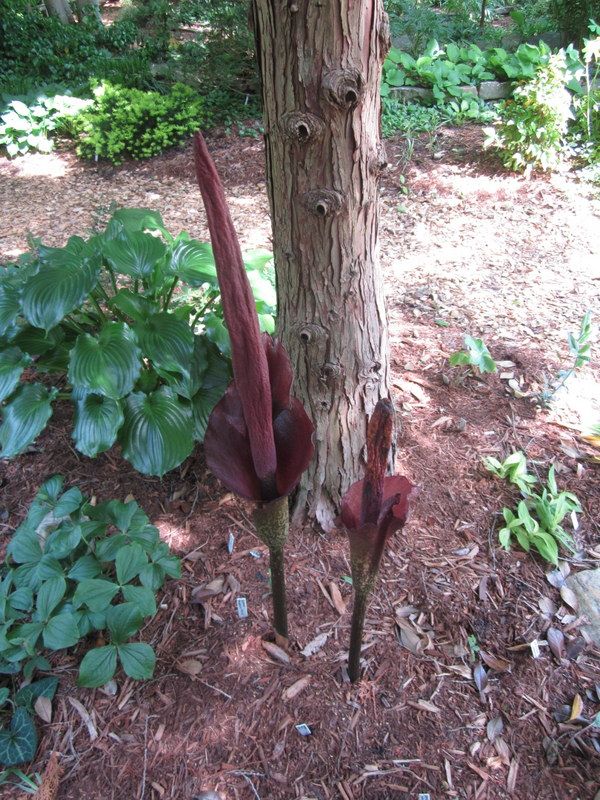
Photo Caption: Voodoo lilies often bloom before their foliage emerges from the ground in the spring. The flowers are grossly pungent but short-lived.
I used to daydream about planting the largest flower in the world, voodoo lily Amorphophallus titanum, next to a pond full of Victoria lilies Victoria cruziana. Throw in a stand of thorny solanums, wild ginger flowers, toad lilies, prickly caterpillar, and maybe a winged rose and you might as well be in Wonderland… or on drugs.
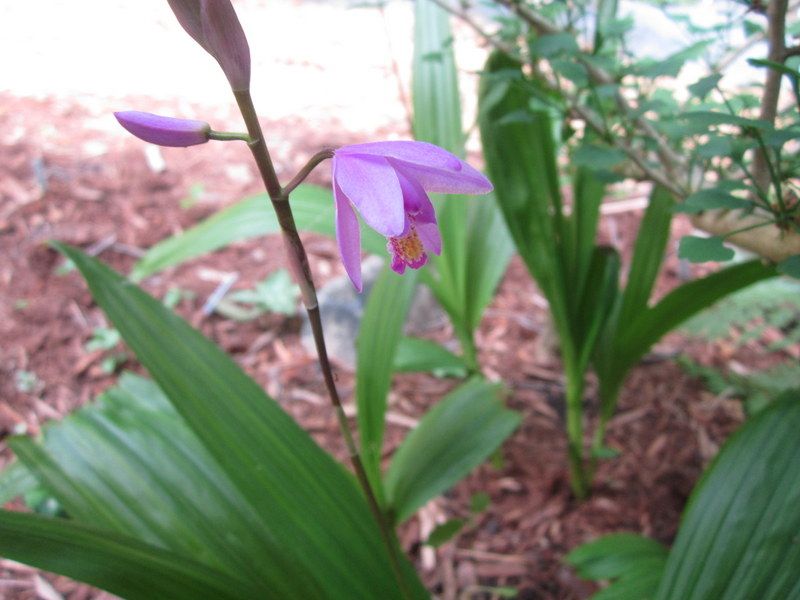
Photo Caption: Bletilla looks dainty but is one of the easiest plants I’ve ever grown. Once established, it handles our summer heat and drought without flinching.
Moving back to orchids, if you regularly kill the potted florist varieties you might want to try bletilla. They’re more affordable than the ladyslippers and incredibly easy to grow once established. Calanthe and spiranthes are two more hardy orchid options carried by Plant Delights. There are also orchid lookalikes such as boesenbergia.

Photo Caption: Unfortunately, plants in the genus oxalis only look like nitrogen-fixing clovers and do not provide the same benefit in the garden. However, they are beautiful additions to the herb layer and some of them make tasty sour snacks or edible tubers (oca).
I’m pretty good at finding four leaf clovers but shamrocks make it easy (yeah, it’s cheating). There are many native species that are especially pretty in the early spring, plus they’re edible. Plant Delights specializes in non-weedy oxalis specimens.

Photo Caption: This alpine rock garden is sharing the space with some LBMs — unidentified Little Brown Mushrooms.
Plant Delights really turned me on to the idea of the “the right plant in the right place” due to their obviously delineated garden segments. As you walk around you can clearly tell what belongs in shady dry woodlands, sunny alpine rock gardens, or slow-draining bogs. Examining your landscape to decide what kind of habitat you have (or can amend) is key to making your plants happy.
Another thing Tony Avent opened my mind to was the idea that non-native plants or so called “invasives” are not of the Devil. When you talk to gardeners in sustainable or naturalist communities, the prevalent idea is that invasive species should be eradicated and natives promoted.
The thing is, I’m not so sure. In spite of being a huge proponent of growing natives, I don’t think you have to choose one over the other. I mean, if your property is adjacent to a state park or other pristine native habitat it is a good idea to avoid opportunistic plants like privet or Japanese honeysuckle in your garden design. I also try to choose a native species to fit my needs before considering other options. But I’m keeping an open mind that certain plants are not the enemy.
Plant Delights Nursery sells North American native plants and even the more specific North Carolina native plants. But when this 1995 Tony Avent article came out, it made me carefully consider the “natives only” argument that was being loudly touted at the time. (Re-reading it now, I’m amused he mentioned household name Michael Pollan‘s New York Times Against Nativism article by calling him “Michael Poulan”).
Recently, I keep seeing this argument emerge in permaculture materials like Toby Hemenway’s excellent take on it and the book Invasion Biology: Critique of a Pseudoscience by David I. Theodoropoulos. At this point I’m feeling open to finding ways to use even the “worst” opportunistic plants like kudzu and autumn olive. I wrote this article on kudzu as a joke, but don’t be surprised if you see a post detailing its incredible usefulness in the near future.
This brings me to the native, but unpopular, poke sallet in the above photo. Last year I wrote about it as a potential permaculture superstar. Sometimes we need the jolt of seeing a hated plant in someone’s display gardens to look past our hard-rooted prejudices. Maybe I’ll eventually learn an appreciation for Bermuda grass, English ivy, and Carolina snailseed vine.
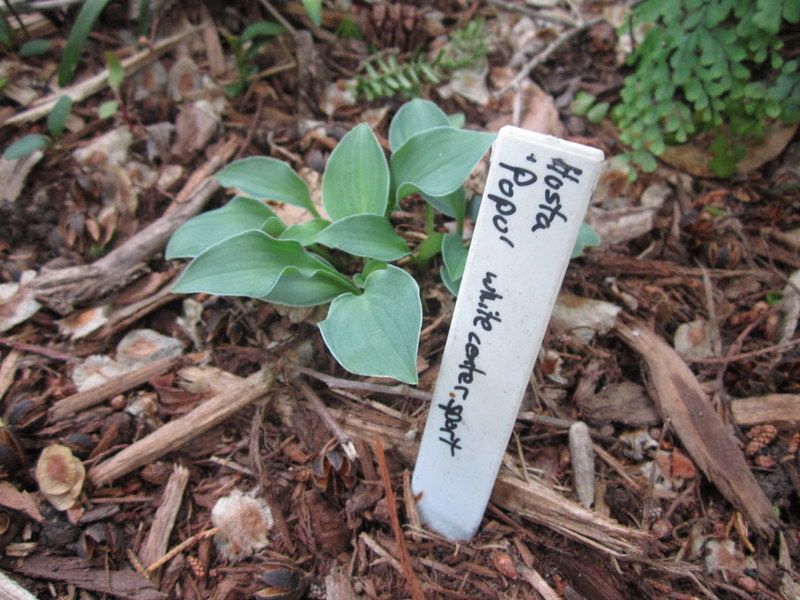
Photo Caption: I couldn’t find Hosta ‘Popo’ for sale on Plant Delight’s website but we thought this little miniature was adorable. I am a nut for the tiniest plants, but terrible about letting them get overrun by larger neighbors.
Hostas are another plant I used to turn up my nose at. Humans are so strange. I don’t know why most of us feel the need to resoundingly dislike at least one popular thing (country music, Star Wars Episode I, mimes, t-shirts with wolves on them, the Twilight series… I guess I won’t argue with that last one) but we all do it. As best I can tell, plants have a shiny and new fashionable period but every generation that starts gardening after their introduction finds them unbearably dull.
I get bored with red geraniums, petunias, azaleas, impatiens, and probably a dozen more common bedding annuals. Each year I grow some of them anyway and try to appreciate their true value. Daylily ‘Stella de Oro’ didn’t choose to exist in planters outside every gas station and mall in the nation. It also happens to be one of the best-tasting varieties for daylily fritters.
A lot of ornamental plants (again, including hostas) have edible parts. Plant Delights Nursery doesn’t encourage people to nibble their offerings, but throughout the PDN catalog you can find a black pomegranate (maybe it is higher in antioxidants?), hardy bananas, heat-resistant ostrich ferns with edible fiddleheads, Japanese woodland ginger, some wild gingers, Manihot grahamii which is a possibly edible tapioca, edible violets, some elephant ears (warning: although taro is bred from C. esculenta little info is available on whether ornamental varieties of the species are edible), spineless prickly pears, and edible/medicinal/tea herbs like salvia, catmint, oregano, echinacea, lavender, rosemary, and monarda. Make sure you’ve researched which part of the plant to eat and how it is safely prepared.
Additionally, many plants have other permaculture uses including countless beneficial insect attracting plants or fiber-producing yuccas. They also sell a lot of proven and potential nitrogen fixing plants such as baptisia, amorpha, indigofera, coral bean, non-weedy lespedeza, Korean cream pea, Chinese bush pea, Amicia, and heat-tolerant milk-vetch.
The important lesson here is maintaining a sense of curiosity and willingness to experiment. That’s how humans first find the best plant knowledge to pass down.
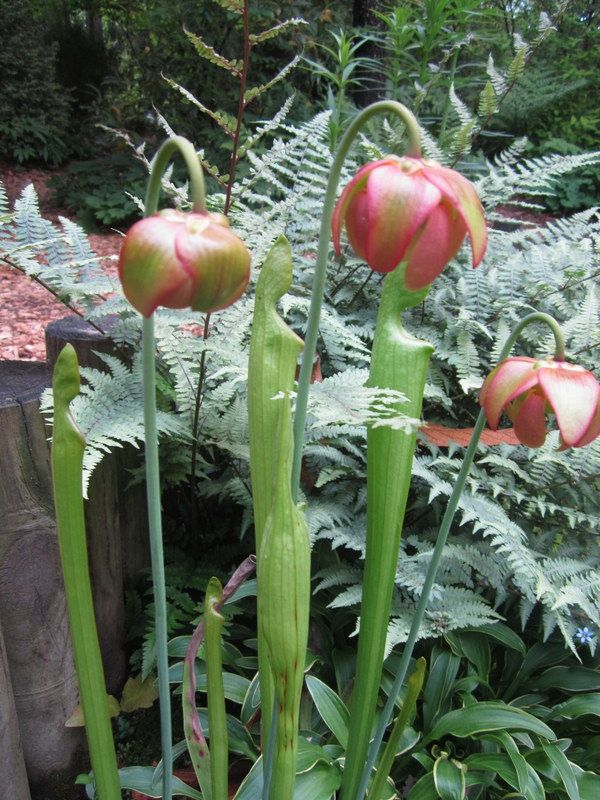
Photo Caption: Some pitcher plants are native to the southeast, but you can be sure the ones at Plant Delights Nursery weren’t poached from the wild.
We’re always trying to attract predatory insects to our gardens, but what about using carnivorous plants? Many of them are native, too — Venus flytraps are only found naturally in the Carolinas within the United States. We also have pitcher plants and sundews.
If you’ve got a wet area on your property, this may be the solution!
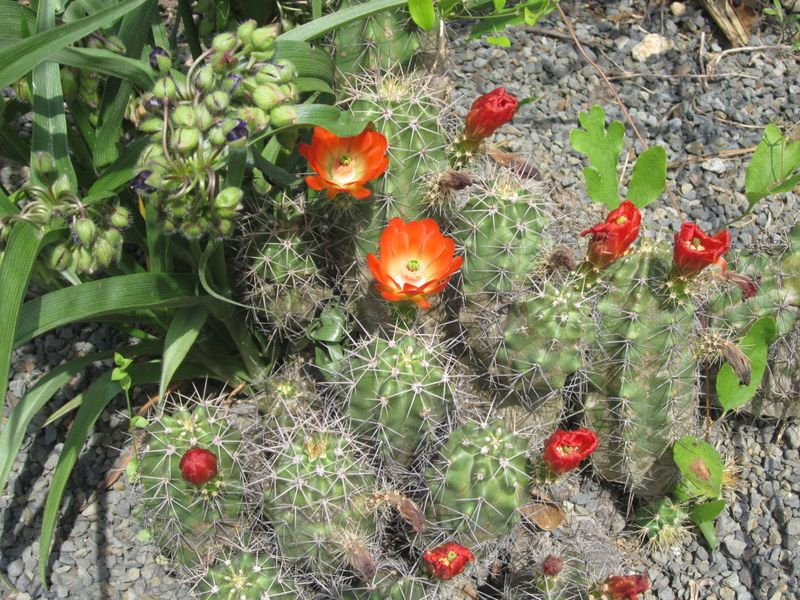
Photo Caption: This blooming cactus doesn’t need to crowd your windowsill with its pot to survive the winter.
On the other end of the spectrum, Plant Delights Nursery has an enormous selection of succulent plants that survive hot, dry areas. Many succulents also have flowers adored by hummingbirds and beneficial insects.
I don’t grow plants in pots unless they need to come inside for the winter or they are a xeriscape species that I can neglect. The structural nature of most succulents means they make excellent living sculptures.
Prickly succulents are also a great choice for areas you want to discourage animals (be it livestock, wildlife, or humans). If you have an area that needs a simple barrier, consider an agave instead of a fence.
Some succulents even provide a nice harvest, like this spineless prickly pear. It will bear sweet, pear-like fruits (sometimes called “tuna”) and edible pads called nopales. Note that even “spineless” prickly pear cacti have irritating hairs. You can burn the outside of the pads to remove them.
Any kind of plant diversity and high quality soil will become a habitat for wildlife. We saw an enormous number of frogs, toads, lizards, little mammals, and invertebrates as we walked around the display gardens.
Plant Delights is a good place to learn about layering and planning for abundance over time. Even though the plants are ornamental, they have similar characteristics to edible species and can inspire innovative design. There is always something in bloom, even in the winter.
You can visit throughout the year and learn what types of plants are adapted to the seasons and observe what animals (including humans) use them for. Plants with winter interest such as stalks, stems, and evergreen leaves provide habitat for wildlife. Ephemeral plants are a great space saver since they complete their life cycles before competing with other species for resources. Most of them come up in early spring before deciduous trees leaf out.

Photo Caption: This columnar sweetgum tree is probably the variety, ‘Slender Silhouette’ which does not require pruning to get its unusual, branchless shape.
When I first learned about forest gardening, I felt like I’d already seen it in the Plant Delights display gardens. Again, they aren’t growing many edibles on purpose (there’s a small grape, blueberry, and strawberry area) but the structure of the botanical garden is a series of wooded areas that open into clearings. Diverse tree species are spaced carefully and their understories are managed for shrubs and herbs to thrive. It would take a small leap to imagine them as edible landscapes with plans for succession and guilds to handle fertility and mulch.
Even the elements of the nursery were fairly permaculture-esque. The greenhouses were arranged in a branching pattern close to the parking lot to make them easily accessible for open-house visitors. Instead of maintaining large clearings, access roads and driveways were lined with displays of sun-loving plants.
Social areas were planned throughout the garden, with larger ones located next to the house. There were frequent spots to stop and rest, with a focal point of some kind located nearby. A welcoming design like this encourages gardeners to walk through on a regular basis — which means problems or ripe crops are spotted early.

Photo Caption: This Tinantia pringlei looks a lot like our native, edible spiderworts and grows in the same conditions.
Every niche was planted with well-adapted species. Many of them had naturalized so that they spread on their own when gaps occurred in the landscape.
With over 18,000 different plant species, Plant Delights Nursery is definitely planning for redundancy — if a few species die, open house visitors won’t be able to tell. Their garden plan also reduces potential pests with so much diversity. A problem bug may find a plant it likes but get lost or eaten trying to locate another specimen.

Photo Caption: Many of us don’t consider growing unusual dogwoods since we’re happy with the native species. This ornamental variety is a show-stopper, but it made us think of Cornus mas, a dogwood with edible berries.
No more guilty pleasures! From now on, I won’t skim the “boring” or “useless” sections of botanical gardens (the parts without something I can eat). I don’t want to miss out on discovering the perfect solution for my edible landscape.
~Eliza
5 thoughts on “How to Feel Inspired by Ornamental Gardens”
Comments are closed.
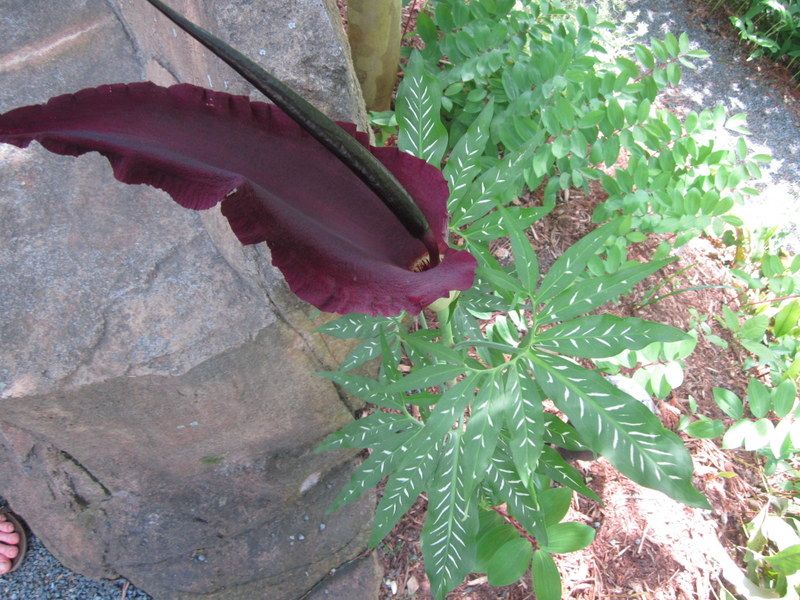
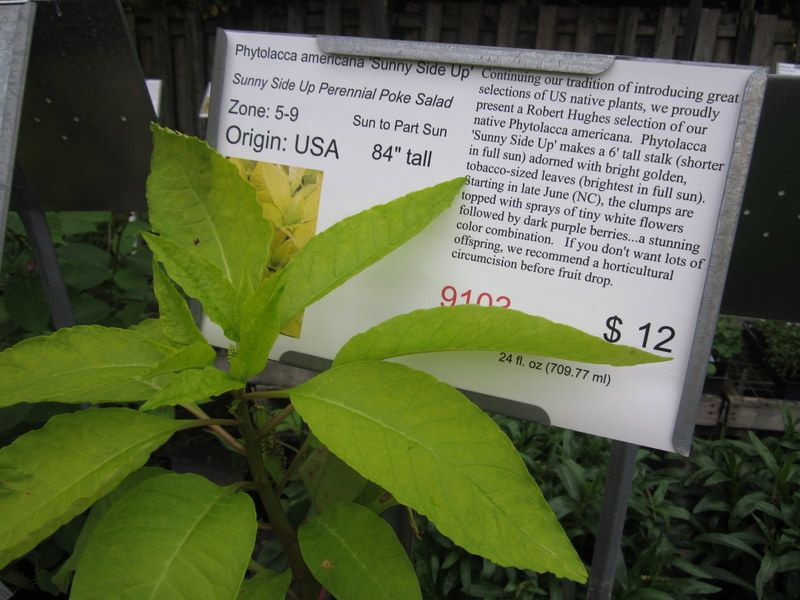
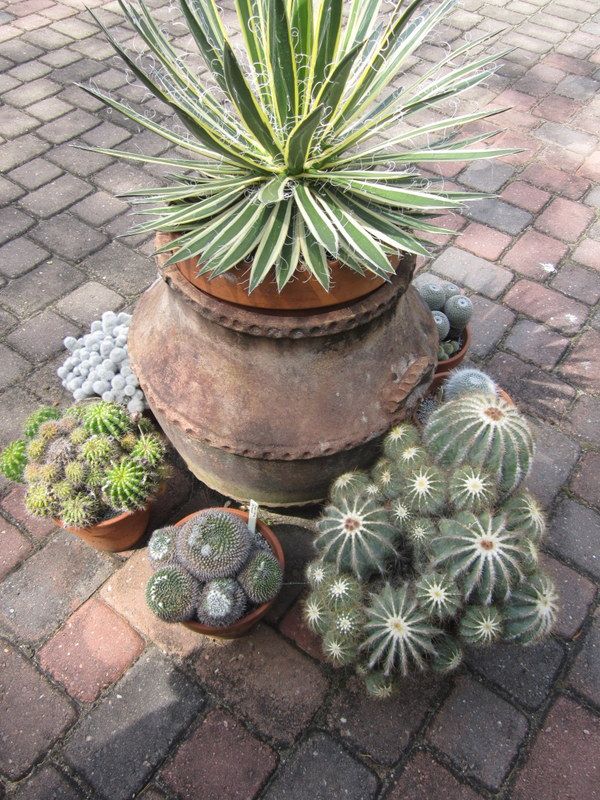
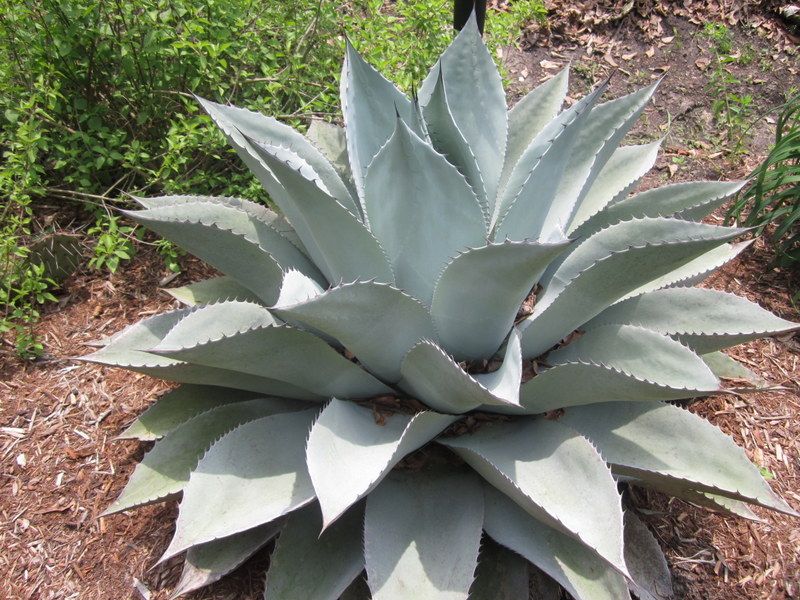
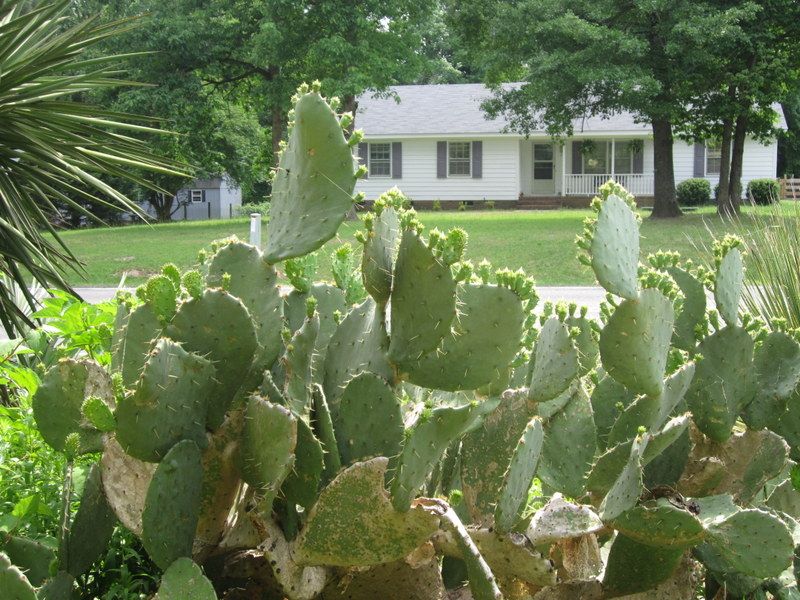
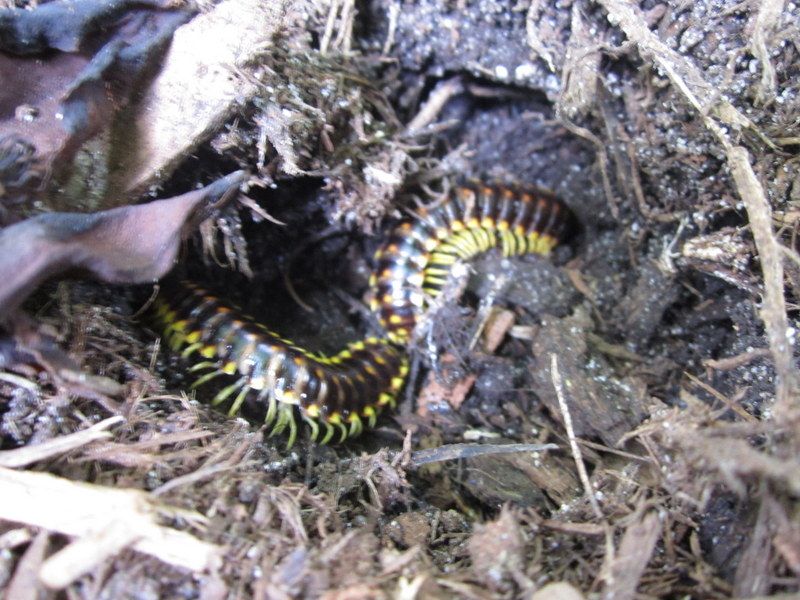

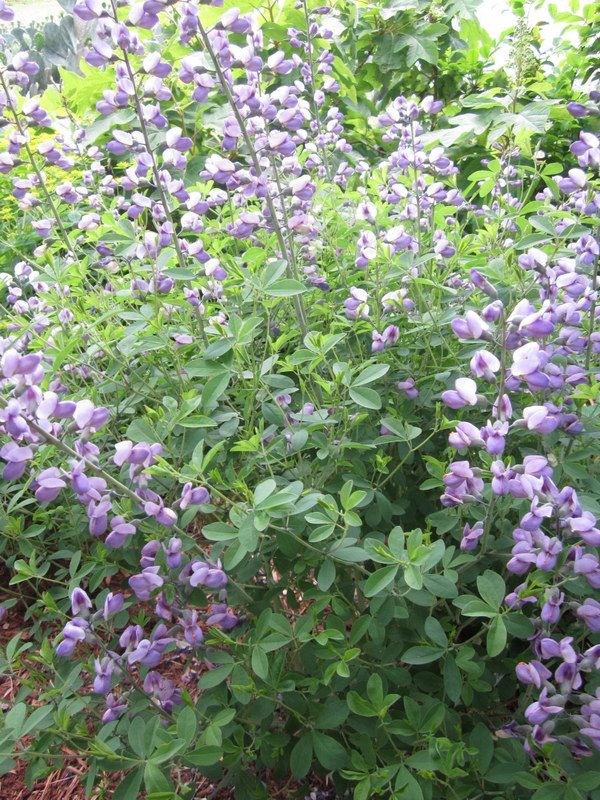



PlantPostings
Twitter: plantpostings
- June 10, 2013 9:56 pm
Now that is my kind of place! We just saw some Ladyslippers (and Jack-in-the-Pulpits, and Baptisia) in the wild during a hike on Saturday. Wow, that Voodoo Lily is fascinating!
PlantPostings´s last blog post ..Plant of the month: Viburnum opulus
Eliza Lord
Twitter: appalachianfeet
- June 11, 2013 12:36 am
Ooh, makes me want to go hiking and see what is blooming.
Eliza Lord´s last blog post ..How to Forage in the City
Angie unduplicated - June 10, 2013 9:56 pm
Mil gracias for the lead on the spineless tuna. I want some for a xericulture bed, if I can talk the boss into it. Even the spiny ones can be cleaned off with a cycle in the old Maytag, minus the soap.
Florida once had a nursery, Mean Green Plants, which specialized in carnivorous plants. Don’t know if it’s still in business.
Great column!
Eliza Lord
Twitter: appalachianfeet
- June 11, 2013 12:32 am
Thanks! Wish I could find that carnivorous nursery online, it sounds fantastic.
Eliza Lord´s last blog post ..How to Feel Inspired by Ornamental Gardens
Joan - June 11, 2013 9:03 am
Fun memories. Mom